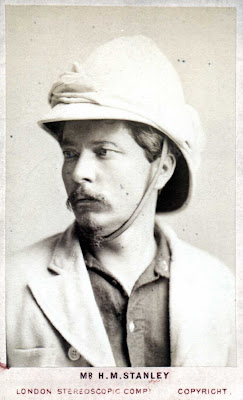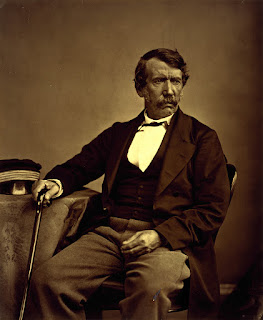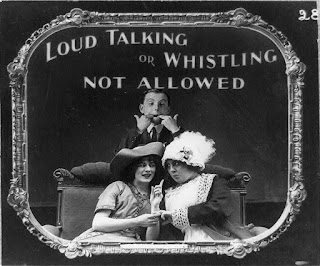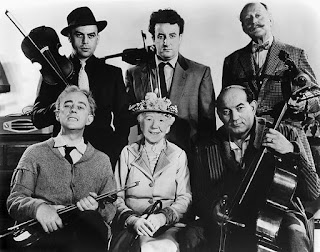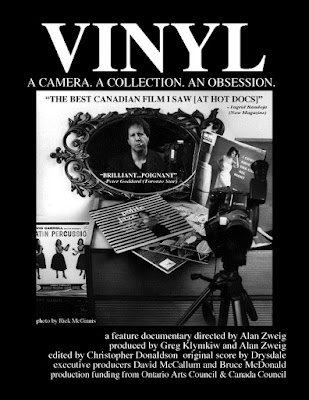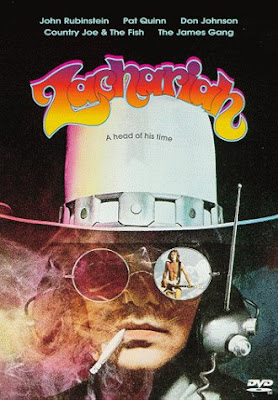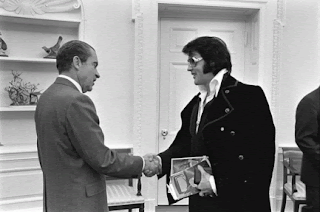 |
| Looking east along Grand Avenue with the sun rising over Biscayne Bay |
This is Part Two of a series about Grand Avenue in Coconut Grove.
The car creeps west very slowly along Grand Avenue at well below the posted speed limit. It’s 5 in the morning. There are no cars to impede at this hour.
Very few people are even awake at this hour. In the Center Grove, those moving along Grand seem to be working folk. They’re either headed to work, or finishing an overnight shift. In several of the restaurants along this stretch, people are washing the floors, making them spick and span for the next seating at the next meal. At restaurants that serve breakfast the prep cooks are just starting to arrive.
Thirty, or so, bicyclists in tight spandex gather on McFarlane Road, just across from the narrow end of the triangle where it meets Grand and Main Highway at CocoWalk. Their flashing red tail lights make the scene other worldly at this time of the morning until, silently, they’re gone. At 5:30 the Starbucks in CocoWalk opens, which increases foot traffic as working people slowly trickle in for their ridiculously expensive lattes.
West of Margaret Street you’d be hard pressed to find a single place to buy a coffee — let alone a ridiculously expensive one — at any time of the day or night. That’s because after Margaret things change drastically. Grand Avenue goes from high end businesses and ritzy restaurants to a slum. The dividing line is the CVS Pharmacy.
 |
| CVS is the demarcation between East and West Grove |
This is not a gradual transition, as it often is in other cities, where a boarded up building leads to a few more on the next block, then more on the next block, until you reach the epicenter of the blight.
Rather, the transition on Grand Avenue is instantaneous. Immediate. Sudden. The difference is so stark that it is noticeable and remarked upon by visitors who have never seen it before. Crossing Margaret is crossing Coconut Grove’s invisible Colour Line, from White Grove to Black Grove; from prosperous Grove to West Grove.
Beyond Margaret is what was once the prosperous main drag of the Black business district of Coconut Grove. Now it is one of the worst slums in all of Miami.
There is another noticeable difference, especially at 5:30 in the morning. The few people on the sidewalks along this stretch of Grand are, for the most part, down-and-out street folks like in all cities: some just homeless, some are addicts, and some are dealers.
Making an illegal U-turn at Douglas Road, the driver makes eye contact with as many of those solitary souls moving along Grand as possible. Sliding into the same parking space near Hibiscus Street week after week, the driver locks the car. Then he sits on a bench near a bus stop making notes, taking pictures, and talking to anyone who will talk back.
This has been my routine for the last many weeks running: observing how this part of Coconut Grove comes alive in the mornings. The advantage to sitting on the same bench week after week is that people get to know me. More of them are willing to talk to me, while others now call to me by name to join their conversations, to introduce me as a writer researching Coconut Grove.
People are starved to talk to anyone who will listen.
The life story I know best (because I’ve spent the most time with them) belongs to Rhonda and Nelson (all names in this story have been changed). Married, with 4 children and a dog, they are living in a building that was recently condemned. The evictions were put on hold while the city sues the owners, but many people have already left. Nelson says that there are only 7 families left in their building.
Rhonda and Nelson have been trying to leave for quite a while, but they have been unable to afford anything even close to the price they’re paying. What’s more is they have no reserve funds, living paycheque to paycheque like so many families in this country. Furthermore, just when it appears they have a small amout of money put aside, they’re hit with another unexpected bill. Just yesterday I heard how their car broke down and they had to put money they couldn’t spare into it.
One recent morning I watched as a neighbour walked her little boy across Grand to their place. They take him to school, along with their own kids, while she heads off to work.
I ride with Nelson as he drops one child off at the designated school bus stop. As we talk, he tells me about the complex we are parked next to. It’s called The Kingway Apartments. Despite the fancy name it’s nothing more than a huge grouping of squat, one story cinder block duplexes. It was still dark, so it took me a while to realize we were parked at the west end of Charles Terrace. This is directly in front of The Colour Line witten about in Where the Sidewalk Ends, Racism Begins.
The Kingsway is where Nelson and Rhonda are hoping to move. Every day they check with the landlord to see if a unit is coming open. For some reason there doesn’t appear to be a waiting list on which one can sign up. While The Kingsway is more than they’re paying now, it is almost just within their budget if they scrimp every single penny. However, it’s the only place around that’s remotely affordable.
When we return to his apartment, I let him attend to the rest of the family’s morning routine of getting the little ones dressed and off to school. I go back to sit on my bench and watch. Soon the sidewalks are coming alive with children carrying book bags and knapsacks. They come out of the concrete block buildings along Grand Avenue, and from houses along the residential streets running parallel, north and south of Grand. Some are accompanied by parents, Others travel in groups of two or more.
 |
| Morning peacocks on Franklin Avenue |
I walk south on Hibiscus. There are a lot of kids walking to school now. When I get down to Franklin, just a few blocks south of Grand, I’m shocked.
Franklin at this time of day is a slow- moving, bumper-to-bumper, eastbound traffic jam from Plaza all the way to Main Highway. The small traffic circles — installed as a traffic calming device — are difficult to navigate with cars filling them.
These are also children going to school, but their rich White parents are taking them to Ransom Everglades School on Main Highway, not the public schools in the area. Each SUV seems to have a single parent and a single child inside. They are only using Franklin, which is still predominately Black owned, as a shunt to get from A to B. Otherwise they wouldn’t be caught dead in this part of West Grove, especially at night.
I walk back to Grand Avenue, the main street where — ironically — there is far less traffic, to get away from the car fumes. I’m back on my bench reviewing my notes about other people who also call this neighbourhood home.
There’s Bill. He was riding a bicycle as I slid into my usual parking spot at 5:30 AM. I nodded as he slowly rode past. When I got out of the car he said, “You okay?” This is street slang for “Would you like to buy some drugs?” Once again I have been racially profiled. The sad truth is that most of the White folk who show up on this end of Grand tend to be looking for drugs.
I told him I didn’t need anything, explained I was a writer, and asked if he’d sit and talk to me for a while. It was as simple as that. Bill and I sat there 25 minutes. I asked him intrusive questions about his business, his family, his home, life on Grand Avenue, and — most importantly — systemic racism in West Grove, where he has lived his entire life.
Bill was nervous every time a police car passed, as several did, and kept saying he should go. He admitted that he carried no drugs. Had we made a deal, it was something he had to retrieve. So I asked him why he was so nervous. A Black guy, known to the police, sitting with a White guy? That will attract undue attention. I kept telling him that we were just 2 men talking on a bench. I know my rights and would love a cop to show up and start asking questions.
Bill, who has been Black longer than I’ve been White (and older than the other bike salesmen in this part of town), was horrified at the thought that I might challenge a police officer. I explained to him how my White Privilege allows me to get away with stuff like that. That’s when Bill brought me up short. “But I’ll still be here tomorrow. Will you?”
Patrice is another of my early morning friends along Grand. She now introduces me to people as “Mr. Headly”, even though I have asked her not to call me Mister. The first time I met her she was with her friend Mary. At first I thought they were trying to hustle me and, maybe, they were. However, I made it clear pretty quickly that I was writing about Coconut Grove history. When they heard I was wrote about the E.W.F. Stirrup House, they were an open book. We went for a long walk along the residential streets where they showed me where there were hidden cameras in the trees in a vacant lot. There weren’t, but their drug paranoia was strong.
Mary is jonesing. She needs a pick me up. She needs to make money. She needs to pack because she’s being thrown out of her place today. She needs to go and take care of business. But she walked with us for another 15 minutes before she finally left, Patrice trying to convince her to stay the whole time.
Patrice and I walked further south to Marler Avenue, where I showed her another segment of the Miami-mandated and still visible Colour Line Wall, built to keep Black Grave and White Grove separate — and, incidentally, still doing a pretty good job of it. [Read Part Two of Where The Sidewak Ends, Racism Begins.]
As I explained to her why Marler is land-locked, I have rarely had a more attentive student on one of my walking history tours. However, while describing the chain link fence that went up across the footpath that connects Marler to Loquat Avenue, a friend of hers rode up on a bicycle. He said something to her that I didn’t hear. Patrice gave me a cute little shrug and went off with him.
The next time I see Patrice she’s sitting behind the wheel of a shiny brand new Mercedes. I don’t know it’s her at first. I was sitting on my customary bench a block away. Even at 5:30 in the morning it was hard not to miss that something was going on over there because the driver’s door was open and people kept walking over to the car to talk to the driver.
After an hour of note-taking, I got up and walked east. As I passed the car, I hear her calling, “Mr. Headly. Mr. Headly.”
She had 2 other people in the car with her. It started to drizzle when I left my bench, but suddenly the skies opened and it rained hard. I quickly ducked under the awning of a nearby store that hasn’t been open for years, but I’m soaked by the time I get there. It’s a brief shower, less than 5 minutes. I go back to the car to help Patrice because they needed to use my phone. Something had gone wrong with the Mercedes keyless ignition and it wouldn’t start. Her phone was out of juice and they needed to call the dealership.
At 6:30 in the morning no one is answering at the dealership and won’t until 9, according to the recording. Plan B is to use their AARP card. However, all AARP will do is arrange to have the car towed and no one wants that. It’s in a legal, free parking space. [Free because it’s west of Margaret, as are all parking spaces.]
The interior of the car looks like a closet exploded. Clothes and garbage bags filled with clothes are on the backseat. An elderly woman is nestled into all of this like it was a beanbag chair. Then I notice she’s smoking something out of a pipe. The car’s owner is in the passenger seat. She doesn’t look like she could afford a beater, let alone this luxury car that won’t start. She can barely communicate, which is why I am making these phone calls.
The woman in the back seat keeps nodding off during the time I’m on the phone. Suddenly she comes awake and decides it’s time to go. It becomes a scene from a situation comedy: an elderly woman trying to extricate herself from a beanbag chair. I offer my hand and help her out, but she loses her sandals in the process, one skittering under the car. As everybody starts looking for her sandals, I say goodbye to Patrice and head back to Center Grove to meet a source who explains to me the difference between affordable housing, sustainable housing, and workforce housing.
Because he’s using numbers — building costs per square foot, lot sizes, basic incomes, financing costs, percentages, and margins — it all goes over my head. [Numbers are my natural enemy.]
But what of the people who live along Grand Avenue?
Bottom line? The people living along Grand in the cheap, but blighted, apartments are screwed. There will never be any affordable housing built for them. It’s best to think of all new West Grove construction as sustainable housing and/or workforce housing and/or luxury condos. West Grove will eventually look exactly like East Grove and will, no doubt, have the same racial demographic: White.
The basic problem is that these properties have been bought and sold by speculators and developers so many times over the last decade, that the price of the land alone has become astronomical. My real estate source says the land is now trading for far more than the real value should be. But, let’s face it, the actual value is whatever people will pay pay for it. As one developer after another ponied up, the price increased every time. By the time the developers are finished, Grand Avenue will be a concrete canyon 5 stories tall filled with condos, more restaurants, businesses, and not a single affordable unit among them. Anything less would not allow them to recoup their investment.
Along Frow Avenue (1 block north of Grand) and Thomas Avenue (1 block south), the neighbours will be forced to accept the back-ends of these buildings. What is currently two quiet residential streets of 1 story Conch and shotgun houses, will be replaced by 3 story buildings, as the Grand Avenue frontage is ‘stepped back’. They’ll also have to deal with increased traffic, parking lots, and service entrances to these buildings.
This same inflation has come to the entire area north and south of Grand, the traditional Bahamian neighbourhood that’s older than Miami itself. Property values are such that homes that have been in the same family for generations are being sold by folks who find themselves land rich, but cash poor. As land values rise, it gets harder and harder for some people to keep up with the taxes. I hear anecdotal stories of speculators coming in with low ball offers for the deed and they’ll take over the tax arrears. More gossip is of people who reversed mortgaged their homes in order to stay.
Furthermore, the Coconut Grove Collaborative had a long-term plan for the infilling of inexpensive homes on the empty lots in this area. However, the price of the land has now made that a pipe dream.
Slowly the racial demographic of this historic and unique neighbourhood is being changed after remaining fairly cohesive and predominately Black-owned for close to 130 years.
Walking back to West Grove I watch the City of Miami Parks & Rec guy unlock Billie Rolle Domino Park, which is posted closed from sunset to sunrise. However, the sun rose quite a while ago. This is one of the parks that had to be closed due to toxic soil back in 2013. It was also one of the first parks remediated.
Because the park just opened, I’m the first person to use the washroom. It’s clean. I’ve used it much later in the day when it doesn’t look so nice. People have stashed stuff all around this pocket park under the benches. There’s a suitcase under one seat. A duffle bag under another. Under one bench there is a what appears to be an entire camping tent in it’s nylon carrying case. People stored these things here because the park is locked at night and they don’t have to lug this stuff.
Patrice and friends are still waiting for help to arrive. It’s surprising they’re being so conspicuous because the entire neighbourhood has been on edge because of heightened police activity recently.
Just 2 weeks ago I looked up from my computer to turn my attention to the local news on my tee vee. Police and media helicopters were flying over the intersection of Douglas Road and Grand Avenue. It was a weird bit of synchronicity that gave me goosebumps because I was working on Part One of this series, The Grand Avenue 2002 Vision Plan, at that exact moment.
All the local schools were on lockdown as dozens of police cars flooded the area. As I watched these events live at home, 35 miles away, I was texting my sources in The Grove to alert them what was happening in their neighbourhood in real time.
The official story is that police were looking for a robbery suspect who allegedly broke into 3 cars in the area. However, no one I’ve spoken to believes that. They believe police were looking for a suspect in a recent murder, who had been reported in the area because his ex-girlfriend claimed he had just stolen $10 from her and was still in the area.
Whatever brought this mighty show of force down upon West Grove, it served a greater purpose, keeping the folks in line. I have already spoken to several men who were detained that day. None were arrested. All were just harassed, insulted, and held for a while, for no reason at all. Each one (and I am only talking about 3, hardly a representative sample) told me they know the police and the police know them. Being detained was just part of the game being played that day.
From my bench at the western end of Grand Avenue I see the locals start to stir. Car traffic increases by the minute. Out of the side streets, from the residential part of West Grove, come drivers on their way to work. Most of them appear to be Black. They turn either east of west onto Grand and head off to work. However, I also notice that there are a lot of cars that are just using Grand as a shunt — just like Franklin — to get from one place to another. These are, for the most part, White folk.
They don’t/won’t stop in West Grove, long rumoured to be a dangerous neighbourhood. However, in the 7 years I’ve been researching Coconut Grove, wandering these streets at all hours of the day and night, I have never felt unsafe at all. In fact, as I am sitting on a bench getting another resident’s story, a guy walked by and said, “Welcome to the neighbourhood, buddy.” I guess now I’m considered a fixture.
This look at Grand Avenue is based on many visits and interviews over a period of time, although parts read like a single day.
If you’ve liked anything you’ve read at the Not Now Silly Newsroom, please consider donating to my Go Fund Me campaign to Support Investigative Journalism. My Freedom of Information requests from the City of Miami are beginning to add up, not to mention all the other costs of researching systemic racism and corruption in Coconut Grove.






